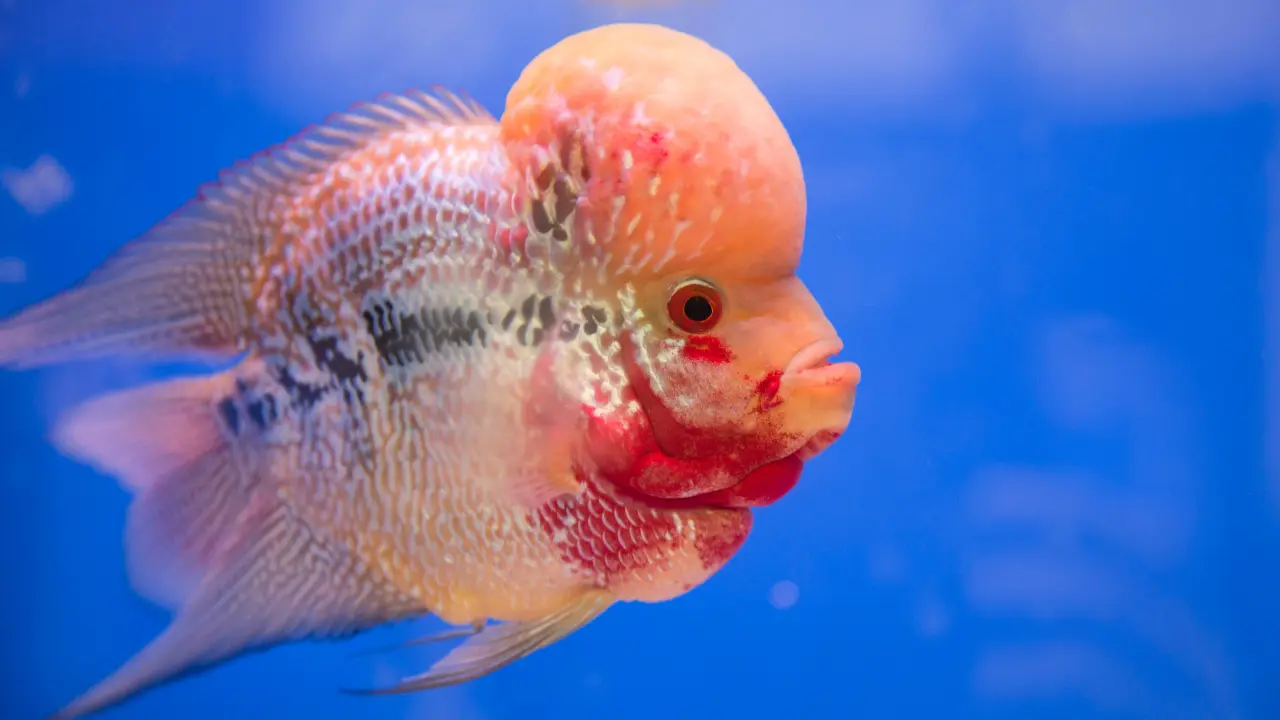Aquatic species have a captivating way of attracting mates by showing off characteristics. These characteristics might be vibrant colors, long fins, or a big forehead. Whether you are an expert or a curious reader, you’ve come to the right place to find out about the nerdy fiveheads. In this article, we will discuss top fishes that have big foreheads.
Let me ask: Have you ever seen a fish that looks like it’s wearing a helmet? Well, to be quite realistic, it might feel funny. However, it is anything but funny. The huge forehead in some intriguing fish isn’t just a random anomaly. Rather it’s an adaptive feature that has taken millions of years to evolve. But the question remains what exactly makes this big bumpy head so special? I’ll answer that in a minute till then, here’s what we will discuss today.
In this article, we will explore more than 10 fascinating fish with big foreheads. Moreover, we will also discuss the reasons behind this humpy head. In addition, we will also discover their habitat and natural behavior. For instance, here’s a list of Big Forehead fish name
- Humphead Wrasse (Cheilinus undulatus)
- Flowerhorn Cichlid (Amphilophus labiatus)
- Beluga Sturgeon (Huso huso)
- Humphead Parrotfish (Bolbometopon muricatum)
- Humpback Grouper (Cromileptes altivelis)
- Nuchal Hump Dolphin (Tursiops aduncus)
- Bullhead Catfish (Ameiurus spp.)
- Lionhead Goldfish (Carassius auratus)
Oh, I almost forgot. The big bulbous head has different purposes in different species. However, here’s one of its uses. The Humphead Parrotfish uses its forehead to break through corals for food.
Interesting right? So, what are you waiting for, let’s dive into the world of fish with Big Forehead!
Frontosa
Frontosa is a freshwater fish, well known for its huge forehead. It uses its big forehead as a tool to show dominance in its society. Take it as a status symbol in Frontosoa communities. This large head isn’t just for show, it’s used for fighting as well!
In case, there is a territorial dispute, the fishes fight in a headbutting competition. This big forehead is their main weapon in such fights.
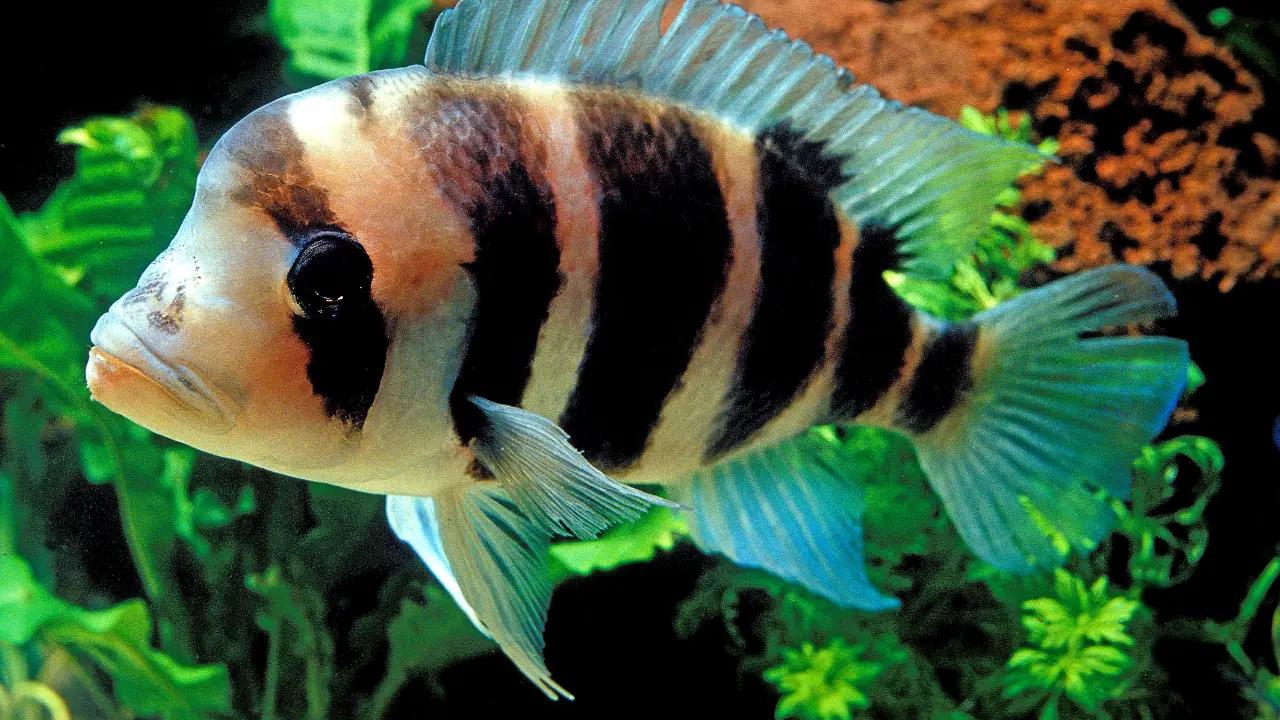
This fish hails from Lake Tanganyika in East Africa. Its natural habitat has a rocky substrate and deep waters with a lot of hiding spots. This habitat provides them with shelter and territories to demarcate.
In addition, Frontosa fish have large bodies. This fish can grow up to 14 inches or more in length. Their bodies are adorned with bold vertical stripes of blue and white. These patterns are effective camouflage that helps them hunt and escape predators. Lastly, their elongated fins make them graceful swimmers with majestic movements.
Asian Sheepshead Wrasse
As the name suggests, this fish has a sheep-like head. Generally, the head looks very different from the fish’s body as it is bigger than the body. This big forehead is used primarily for mating rituals and head-butting competitions. Moreover, this head is used like a hammer to break hard-shelled prey. This type of food makes up most of its diet.
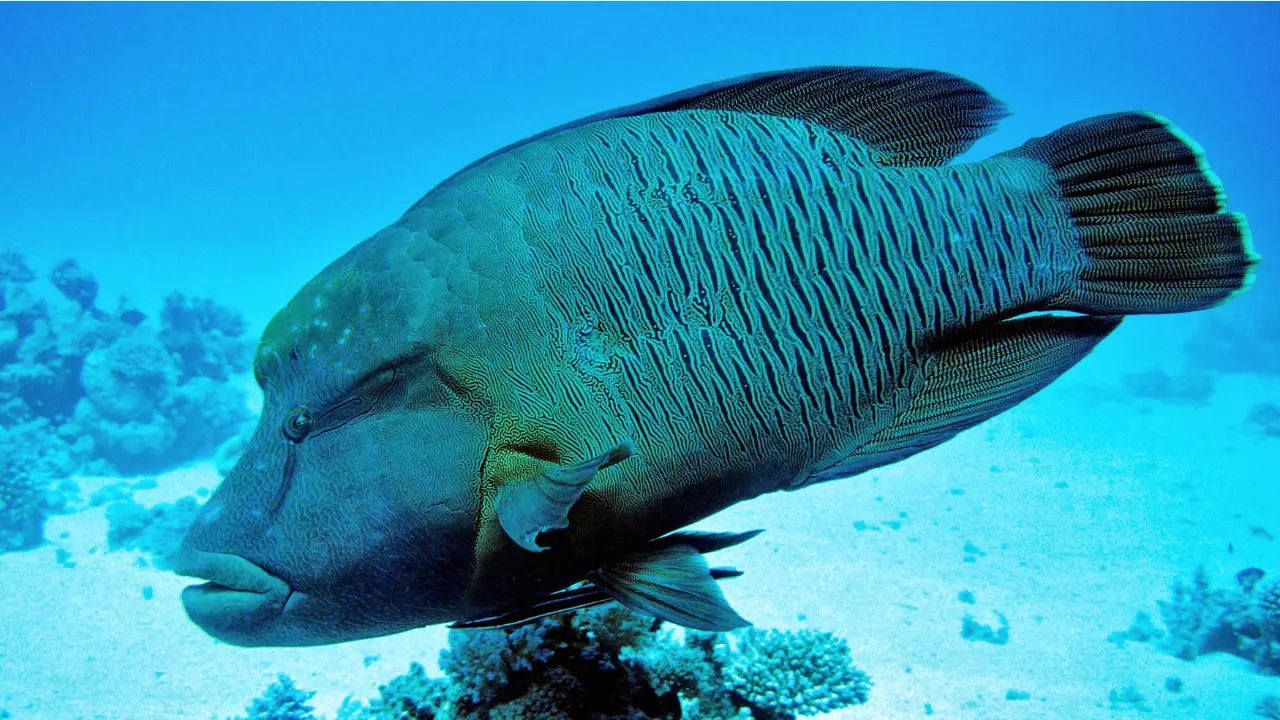
This fish hails from the coastal waters of East Asia, particularly Japan and Korea. Its natural habitat includes rocky reefs and shallow coastal waters. This fish can only live in marine waters and can’t survive in freshwater environments. It thrives in shallow waters or depths of about 50 meters.
This fish has an impressive appearance. Its size is the most intriguing part as it can reach up to a meter in length. Moreover, its body has hues of blue, green, and brown with exceptional patterns. However, juveniles have vibrant orange color with black stripes.
Red Devil
The Red devil fish has a notable hump on its head. This Big forehead is used to intimidate rivals and attack them. Moreover, this orange fish with big forehead also uses its bump to dig holes in the substrates to make nests and hiding spots.
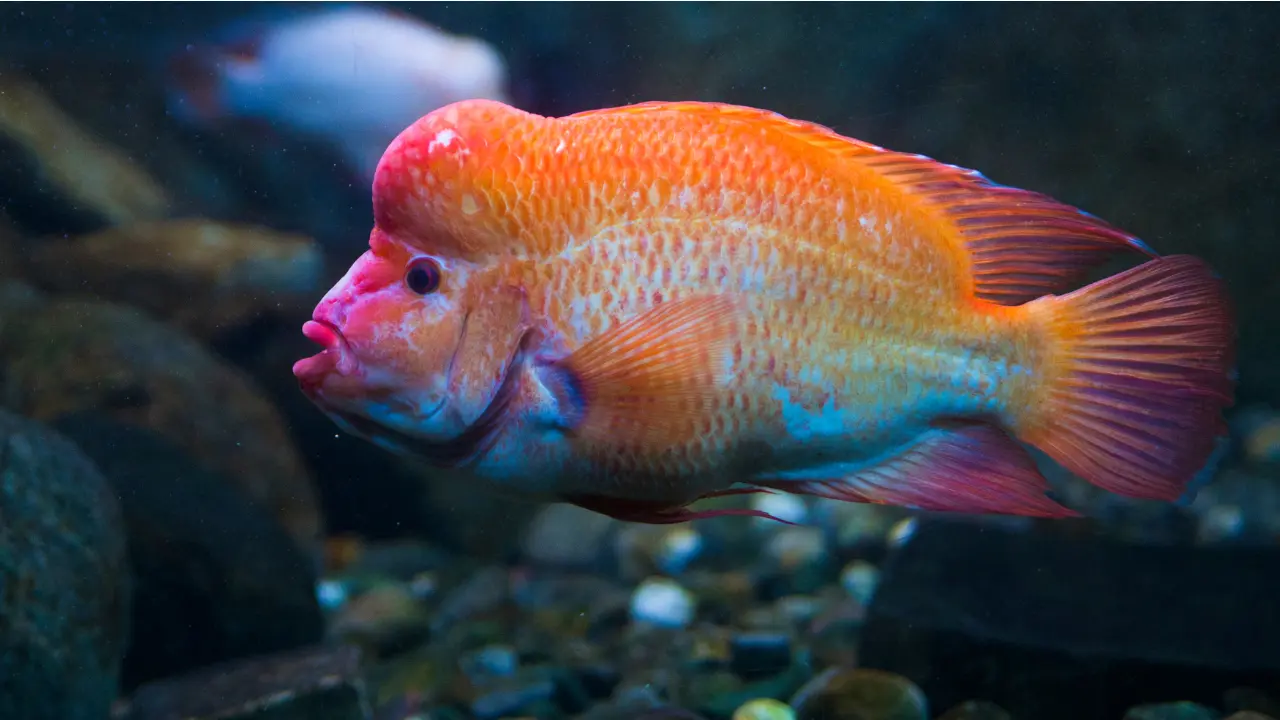
This fish originates from Central America. Specifically, from the freshwaters of Nicaragua and Costa Rica. Commonly this fish is seen in lakes and rivers. Its natural habitat has warm waters with a moderate amount of vegetation. Moreover, this fish lives in regions with rocky substrates. This specific setup provides an ample food supply and shelter to the Red Devil.
The red Devil is no small fish! This fish can grow up to 15 inches in size. Moreover, it boasts an orange-red body with black markings. Looks like the Devil himself, right?
In addition to fierce looks, this fish also has an aggressive territorial nature. If you are thinking of adding this fish to your tank, be aware that it requires a lot of space. Its aggressive instincts make it unsuitable for community aquariums. So, it’s best to keep it in a separate tank.
Oranda
The Oranda is a big forehead goldfish with a prominent bulbous head. This unique head growth is known as the “wen” or hood. This hood looks like a crown filled with fatty tissues. However, it can’t be used for fighting. This bulbous head serves as a cushion as it has delicate blood vessels. In addition, it provides warmth, aids digestion, and maintains health.
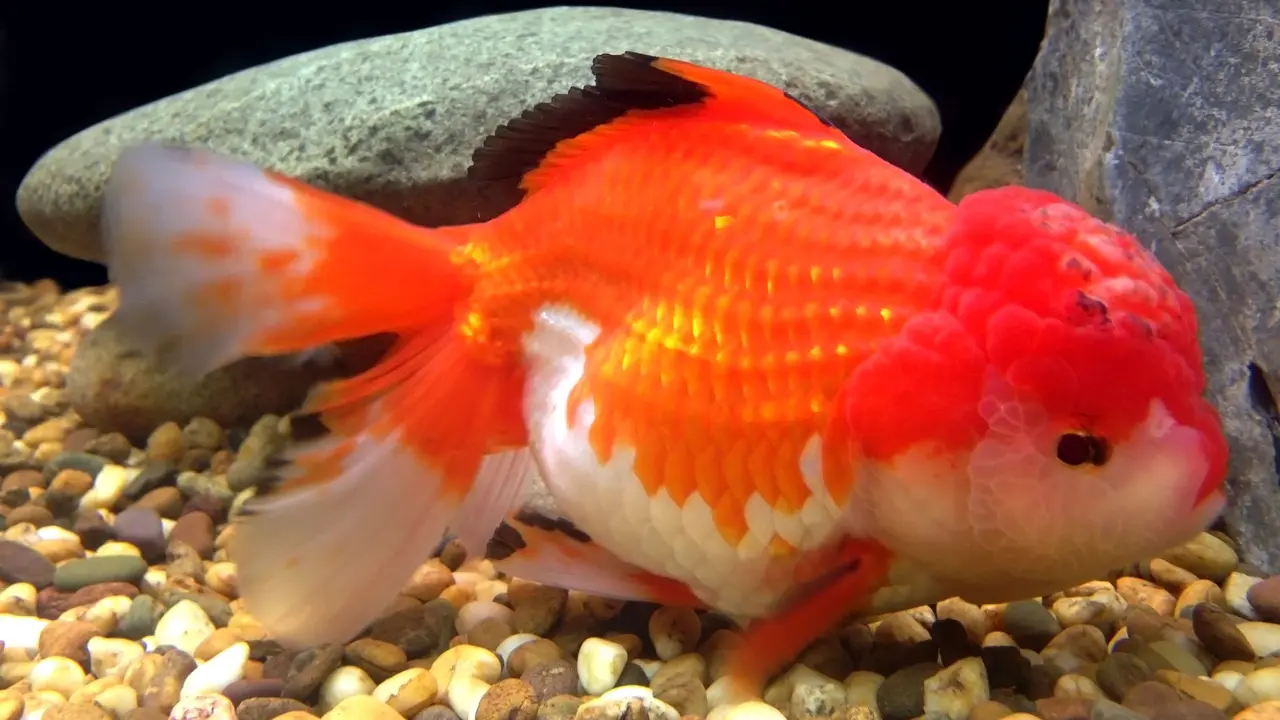
This fish originates from China. The Oranda is a freshwater fish that thrives in temperate climates. This fish is found in ponds lakes and slow-moving waters throughout Asia. This fish is also seen in many aquariums and fish tanks because of its ornamental looks. In addition, this fish is bred selectively and has a huge market.
Orandos have a striking appearance. It has a vibrant body with red, orange, white, and black colors. In terms of size, this fish is usually 6 to 8 inches but some might grow up to 12 inches in length. In addition, this fish has graceful fins that make it a priceless addition to any fish tank
Front Cichlid
The front Cichlid is a fish with large forehead and an interesting behavior. Primarily this head is used for Head-Butting and mating rituals. This distinctive feature is used for both, displaying dominance and defense.
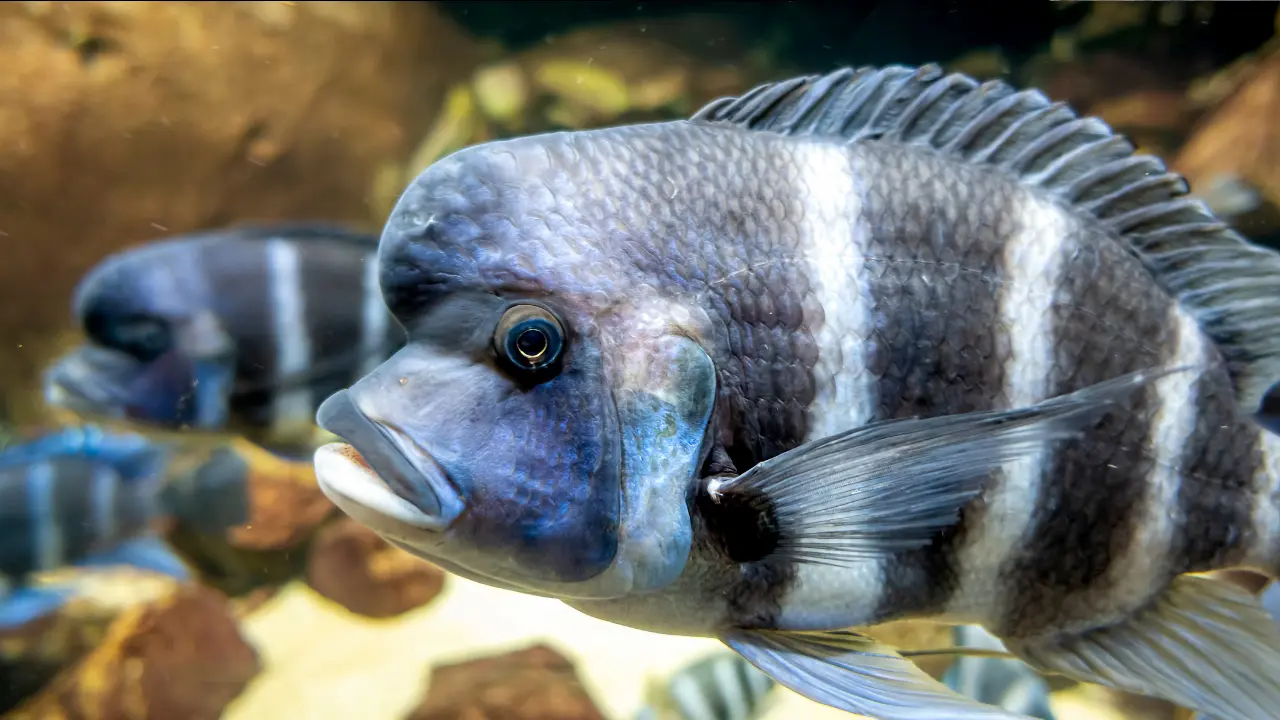
The Front Cichlid thrives in the freshwaters of Lake Tanganyika in East Africa. Mainly its natural habitat is a rocky area with many hiding spots such as rocky shores and lakes with sandy bottoms. Due to its territorial nature, Front cichlids form colonies and establish territories.
The Font Cichlid has a vibrant body with shades of blue yellow and orange. It has a maximum size of 8 inches in length. These beautiful colorations serve as camouflage and a tool to attract mates. Along with its streamlined body, this fish has beautiful fins that add to its beauty and allow swift movements.
Midas Cichlid
The Midas cichlid stands out in the aquatic world because of its distinct head. This bulbous head isn’t just for show, rather it’s used to assert dominance in the tank. Midas Cichlid’s big head plays an important role in fighting and winning mates.
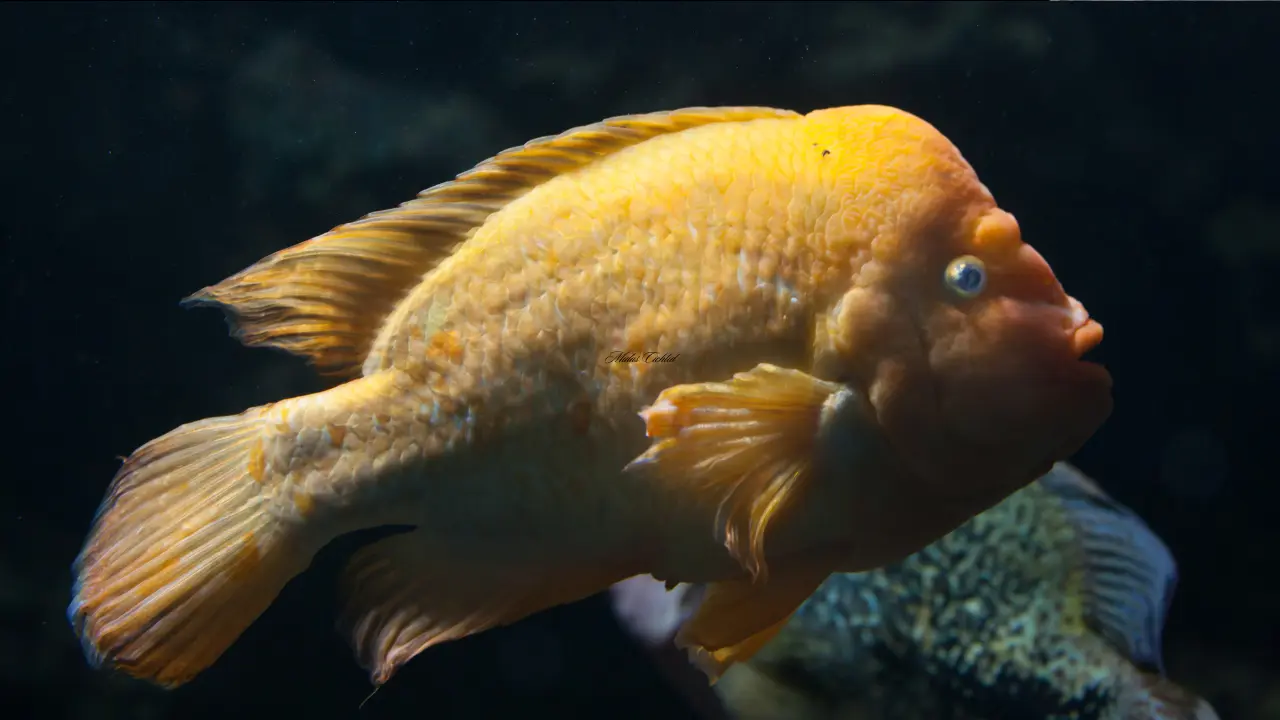
Hailing from the freshwater of Central America, this fish with giant forehead thrives in many habitats. Due to its high adaptability, this fish is resilient to a range of conditions. This fish prefers rocky habitats with plenty of hiding spots.
This fish has an average length of 12 to 14 inches. Moreover, this fish boasts yellows, oranges, and fiery reds. In addition, this fish has aggressive and assertive behavior and tends to dominate the tank.
Chocolate Cichlid
The Chocolate Cichlid has a distinctive bulging forehead. This fish uses its big forehead mainly for digging the substrate and sifting in search of food. This adaptation allows it to scavenge for food and maintain its ecological presence.
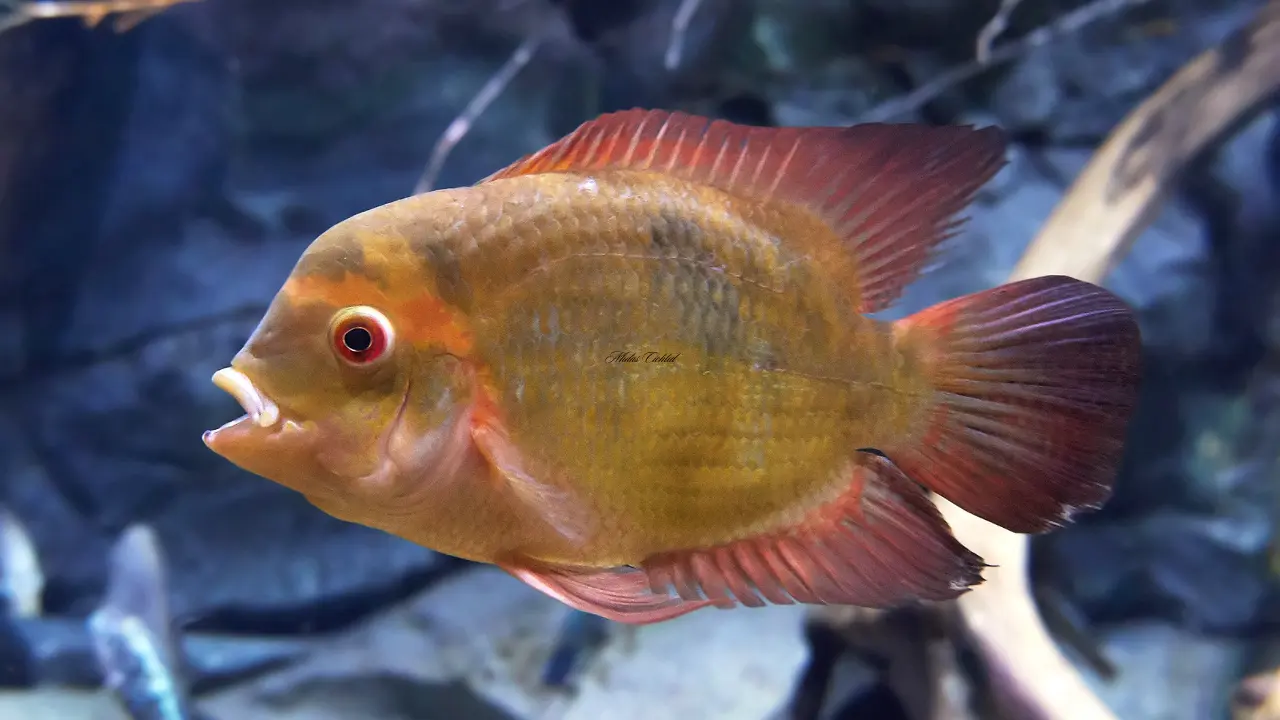
Originating from the Amazon River basins, this fish captivates experts and newbies alike. Freshwaters like slow-moving rivers, lakes, and streams with a warm setting are home to the chocolate cichlid. This natural habitat is full of vegetation as it provides natural food sources and shelter.
Let’s discuss how it looks! The maximum size for a chocolate cichlid is 8 to 10 inches, which is considered moderate. Its name accurately describes its body color, which ranges from dark brown to chocolatey brown with chocolate chip-like speckles. Its thick, rounded body gives it a commanding appearance in any aquarium.
Green Humphead Parrotfish
The Green Humphead Parrotfish has a huge forehead. Primarily this hammer head is used for defense and crushing through objects. It is specially designed to crush corals and extract algae or small organisms. These are then consumed as food.
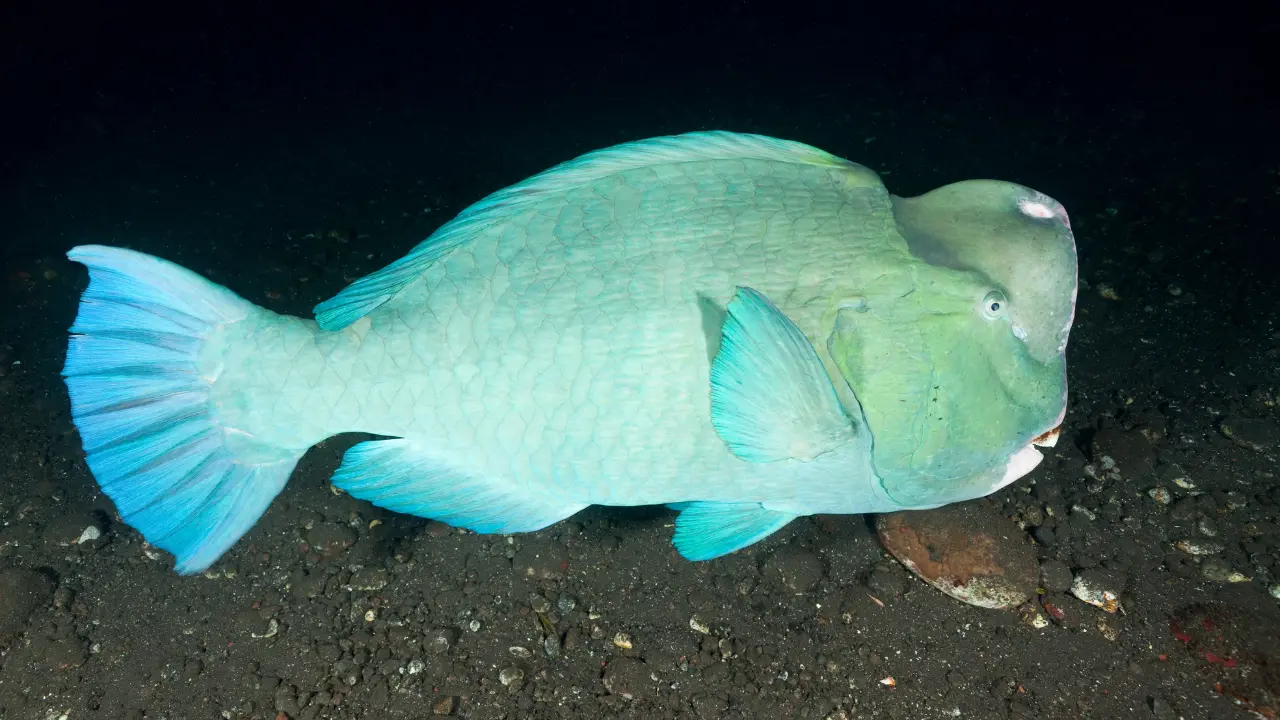
The Green Humphead Parrotfish comes from the tropical waters of the Indo-Pacific Region. Its natural habitat includes coral reefs with a lot of coral growth. This provides a steady food supply. This fish is a marine animal and can not thrive in freshwater environments.
Coming to looks, the Green Humphead Parrotfish has a vibrant green color as the name suggests. This beautiful marine marvel also has intricate patterns all over its body. This fish is huge, with a size of almost 1 meter. It can also weigh up to several kilograms. Additionally, this fish has a beak-like mouth that helps in feeding.
Texas Cichlid
The Texas Cichlid has a unique nuchal head. This adaptation is used for displaying dominance and mating rituals. In males, this big forehead head is more pronounced while females have a subtle bump. This head is a sign of maturity and plays an important role in attracting mates

Originating from the rivers of northeastern Mexico, this fish thrives in fresh water. Its natural habitat includes slow-moving rivers streams and lakes with rocky substrates.
Interestingly, this fish is the only cichlid native to the United States. It is commonly found in the Rio Grande drainage. This fish can adapt to a range of environments but it prefers warm waters.
In terms of looks, this fish boasts an impressive size of 12 inches. Its body has a striking dark olive-gray color adorned with bluish-green spots. In smaller cichlids, the color is very vibrant but as they mature, the color becomes dull. All in all this fish is a captivating addition to any tank.
Napoleon fish
The Napoleon fish is also called the hump-head wrasse. Due to its distinctive large forehead, this fish is easily recognizable. But this hump isn’t just for show, it is used for attracting mates and displaying dominance. This forehead is also used like a hammer to crush open hard-shelled prey like mollusks and crustaceans.
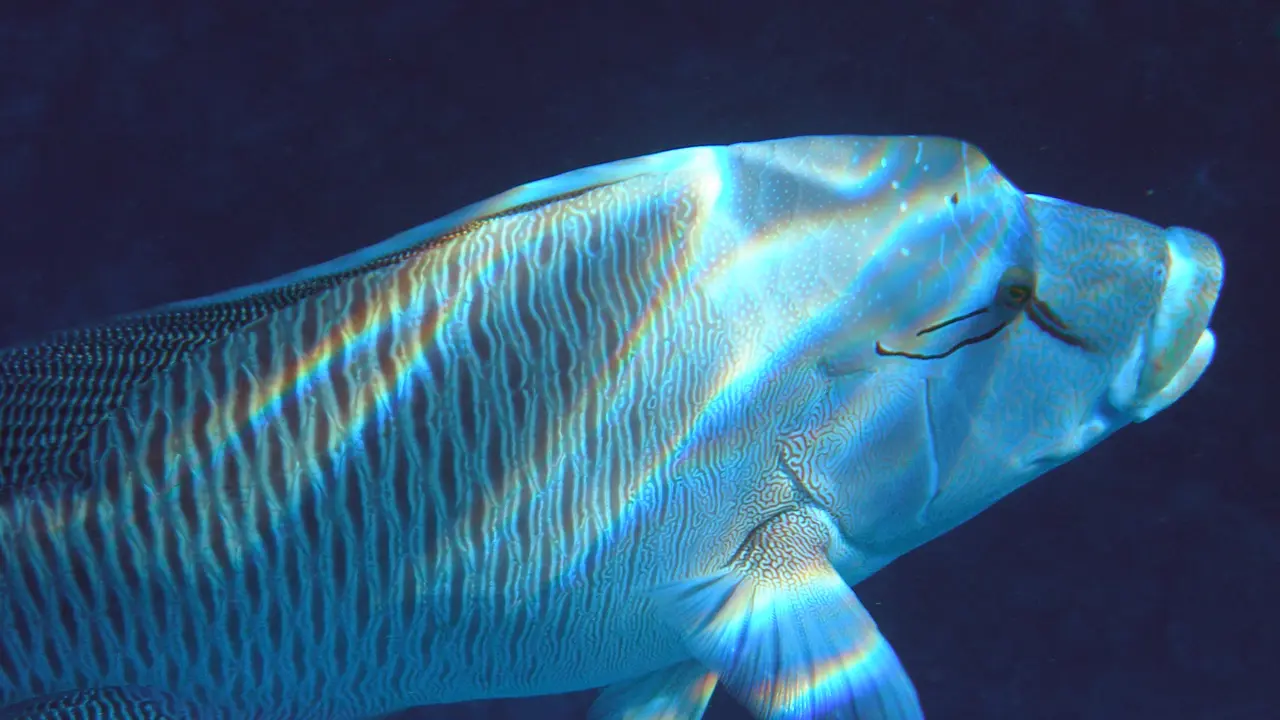
Originating from the Indo-Pacific region, the Napolean fish is a saltwater fish. Its natural habitats include coral reefs and lagoon habitats. This fish prefers warm waters from the Red Sea to the Pacific Ocean, including the Great Barrier Reef.
The Napolean fish like to live in coral reefs. These regions provide plenty of food and shelter. In addition, this fish dwells in shallow waters to depths of almost 100 meters.
The Napoleon fish is huge, making it one of the largest reef fish. This fish can weigh up to 180 kilograms and grow up to 2 meters in size. In addition, its body is covered with thick scales with vibrant green to blue colors. These colors are more vivid in males as compared to female counterparts. All in all, this is a big fish with big forehead and an interesting nature.
They also have intricate patterns and wavy lines on their face, that display a distinct look. All these characteristics combined, make the Napolean fish a true marine-water spectacle.
Mahi-Mahi
Mahi-Mahi, also known as dolphinfish. This captivating swimmer is a bulbous head fish with an incredible swimming speed. Its prominent head includes important muscles that help in swimming and maintain speed. The blunt head has a shape that allows the fish to control the hydrodynamics, allowing it to move swiftly.
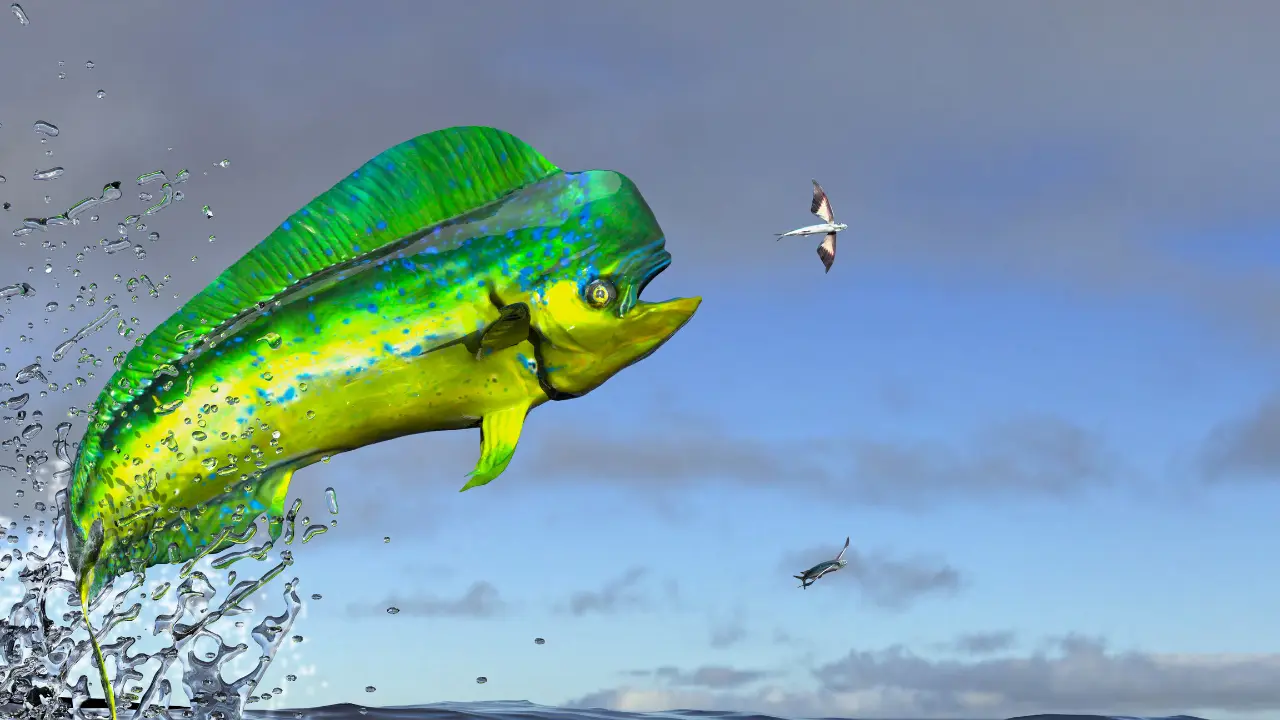
This fish originates from the warm waters of the Atlantic, Indian, and Pacific Oceans. Its natural habitat includes tropical and subtropical regions. This makes it a sea animal with big forehead and impressive agility.
This fish is interestingly a pelagic species. This means that the Mahi-Mahi thrives in open oceans. Usually, this fish is found near floating debris or seaweed. These areas provide hunting grounds and foods like crustaceans and small fish.
The Mahi-Mahi isn’t an oldie goldie! This fish is well-known for its beauty. Mahi-Mahi has an impressive size of 4 feet and weighs up to 15 to 30 pounds. In addition, this fish has vibrant colors and blue and black hues on the back. Moreover, golden yellow shimmers can be seen on the sides.
Lionhead cichlid
The Lionhead cichlid has many names like the “hump-head cichlid” or “blockhead cichlid”. This fish has a distinct protruding head. This large head is more prominent in males as compared to females. It is used to intimidate rivals and attract mates.
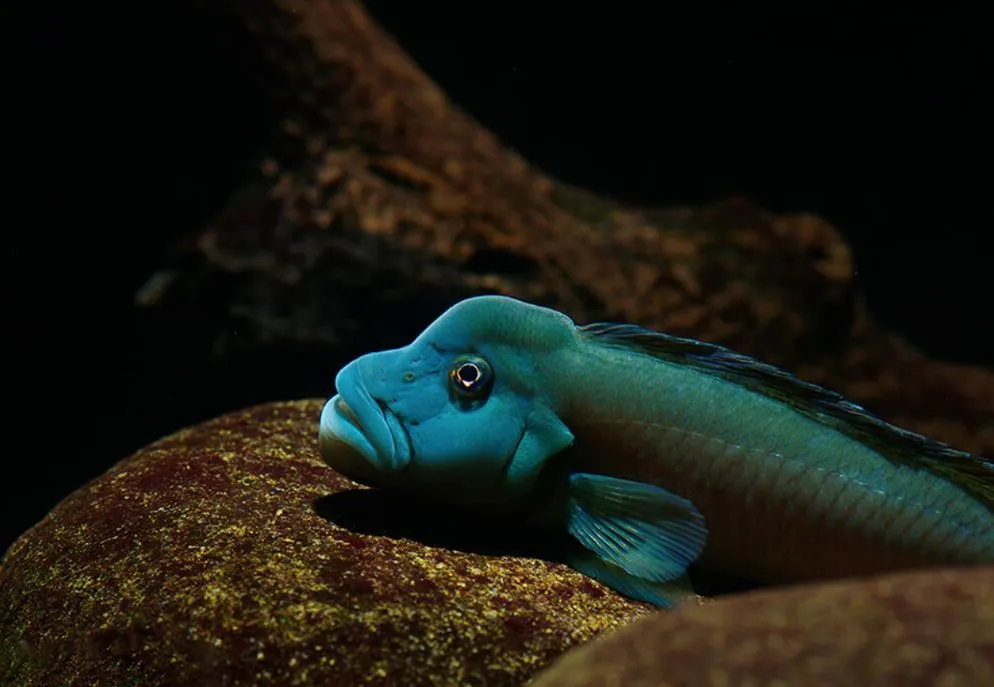
Image Source: meetthepet
Originating from West Africa, this fish is a freshwater animal. This fish is particularly found in countries like Nigeria and Cameroon.
The natural lionhead habitat has slow-moving rivers and lakes with abundant vegetation and rocky substrates. These environments are ideal for their territorial and nesting behaviors.
Lionhead cichlids have a beautiful look. These fish have robust bodies with vibrant colors. In terms of size, this fish can grow from 6 to 8 inches. They have vibrant blue, green, and yellow bodies. The males have more bright colors as compared to females. All of this with a bumpy head, makes this fish a prized possession for any aquarist.
More fish with Big heads
- Flowerhorn Cichlid
- Humpback Grouper (Cromileptes altivelis)
- Giant Gourami (Osphronemus goramy)
- Texas Cichlid (Herichthys cyanoguttatus)
- Giant Snakehead (Channa micropeltes)
FAQ’s
What is the name of the fish that has a big head?
The Green Hump-head Parrotfish, Lionhead Cichlid, and Red Devil are some of the fish that have a big forehead. The humpy head adaptation isn’t just funny, it always has some purpose. Some fish use this head for impressing and attracting mates or showing dominance. In addition, it is an essential tool for digging holes in the substrate to make nests and shelter.
How do fish with big foreheads differ from other fish?
Fish with Big Foreheads have a different behavior than other fish. They use their heads to attract mates, fight with opponents, and crush hard-shelled prey. Most importantly, they are usually territorial.
Why do some fish have big foreheads?
Some fish have big foreheads as a result of adaptation. This head is a tool for several functions, like head-butting battles and displaying dominance. Moreover, this head plays an important role in pulverizing hard crustaceans to make them eatable.
What are the goldfish with big heads called?
Orando is a goldfish with a prominent head that looks like a crown. This fish has a high market demand due to its distinctive appearance.
What kind of fish is Yoriko?
Yoriko is another name for the Asian Sheepshead Wrasse. It is a fish with a big forehead.
Conclusion
To wrap things up, today we discussed Top 10+ fish with Big Forehead. These unique fishes don’t have big foreheads just for show, rather each of them uses it for a special purpose.
All in all, we have discussed aquatic animals with big foreheads like the Mahi-Mahi, Red Devils, and Oranda. In addition, we have also discussed fish with knot on head like the Frontosa and Lionhead cichlid. Mostly these heads are a tool for headbutting battles and displaying dominance. In addition, it plays an important role in attracting mates. some fish even use this hammer head to crush hard-shelled crustaceans, to eat them.
In essence, these examples show how this bumpy head isn’t just a funny look, but has important functions. This adaptability makes the ground for the survival and social interaction of fish.
Let us know: what you think about these geeky bulbous heads. share your thoughts with us in the comments below!

